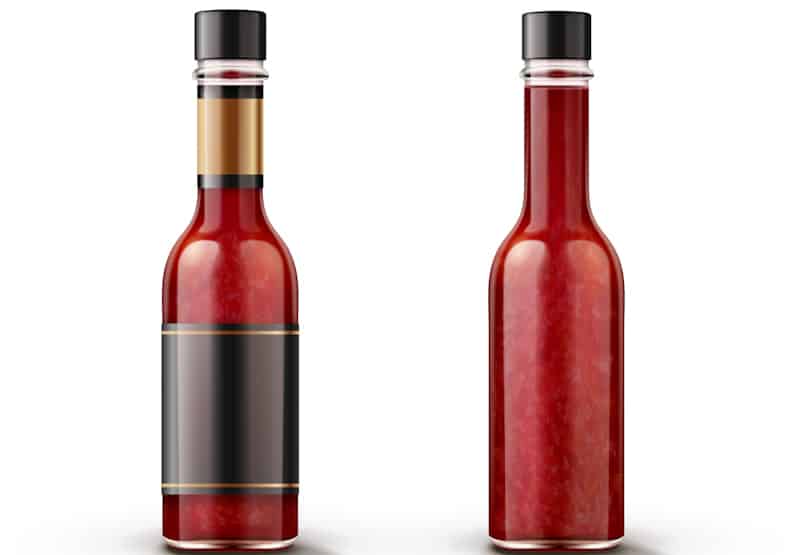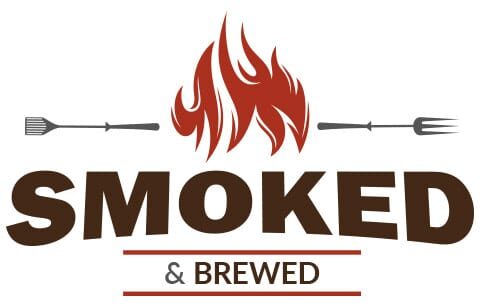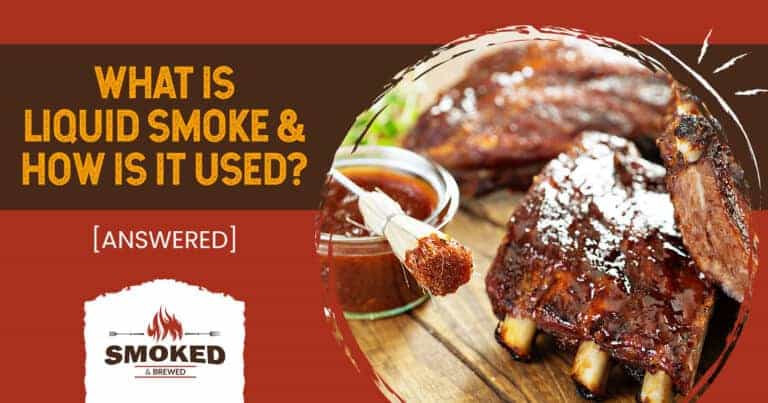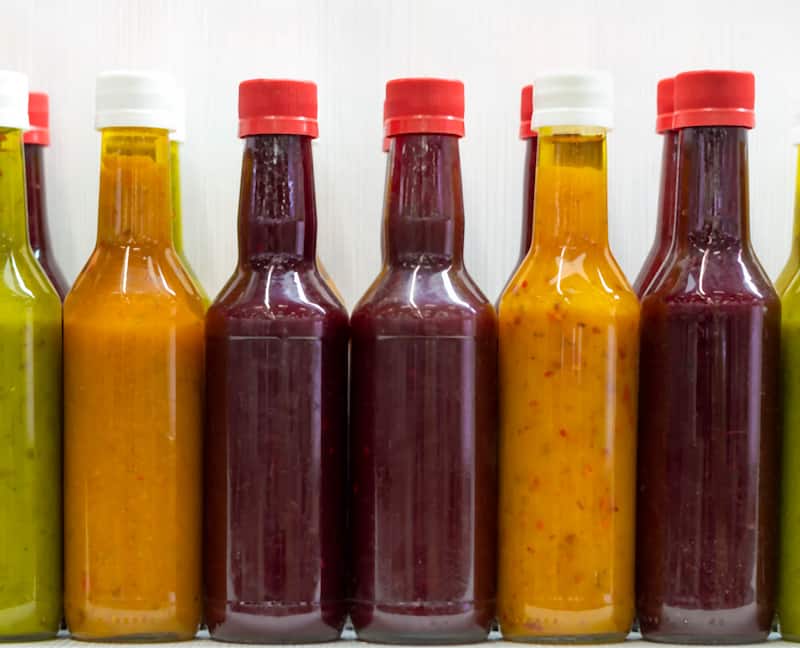Prior to 1895, the traditional way of smoking wood over the fire was probably the only way to introduce the signature ‘barbecue’ flavor in meats and vegetables. It was Ernest H. Wright for the first time (founder of the famous Wright’s Liquid Smoke) who discovered that the liquid form of smoke can also be a great way to replicate the unique taste and contribute to cooking food when you do not have a smoker.
Liquid smoke is a byproduct of burning wood and is used as a flavoring substitute in foods. It is an edible, water-soluble, yellowish-brown colored liquid, basically made of smoke and steam. Liquid Smoke is obtained by first burning wood chips, capturing the smoke, followed by condensing it in liquid form.
Since traditional smokers usually require large spaces and close monitoring, liquid smoke became a quick kitchen hack over the years. With liquid smoke in a bottle, even a beginner can add a hint of smokiness to chicken, turkey, beef, pork, shrimps, salads, and vegetables without compromising on quality.

What Are The Different Varieties Of Liquid Smoke?
Liquid smoke can be an effortless addition to your pantry when you do not have time, space, and access to a smoker set-up. Just adding a tablespoon of the best liquid smoke to your recipe can give that same flavor as traditional smoking, outdoor grilling, or slow cooking, but without you having to sit for hours to watch the firebox!
Today barbeque pitmasters have come up with several liquid smoke substitute variants. These flavors depend on the type of wood burned during the condensation process. The most popular types of liquid smoke flavors are:
- Mesquite – It is the boldest and the strongest variety of liquid smoke flavor that blends very well with fatty beef.
- Hickory – It has an intermediate strength and can blend with any type of meat such as chicken, turkey, or even pork and beef.
- Applewood – It is the lightest and the sweetest among the other types and best compliments fish, vegetables, or shrimps.
- Black Walnut – It gives an intensely strong smoky flavor to beef and pork.
- Orange – The sweet, tangy, and citrus flavor best complements seafood and gives a typical orangish hue to the preparation.
- Sugar Maple – Having a light and sweet smoky flavor, Sugar Maple liquid smoke flavor blends well with pork, ham, cheese, and poultry.
- Pecan – It has a milder taste than hickory and has a nutty aftertaste. Pecan wood smoke is best used for pork, poultry, beef, and game birds.
However, do remember that there are no strict rules for using these varieties of liquid seasonings. It all depends upon how well you can blend in the flavors and use the right technique for cooking.
How To Use Liquid Smoke
Even a whiff of liquid smoke can be very dominating, so never go overboard with it. Adding a tablespoon or two is enough to add depth to the food. There are so many ways of using bottled liquid smoke.
Just brush a thin layer of the liquid smoke before you start cooking the food. You can also mix it in marinades, salad dressings, soup, and ground meat, or over hotdogs to give the preparation its principal smoky flavor.
Liquid smoke may also be used for brining or making crockpot and slow cooker recipes. If you like a subtle smoky flavor in your food, dilute the liquid smoke with water or vinegar.
Best Liquid Smoke
Originally, Wright’s liquid smoke not only captured the unique savory taste, but the product was also reported to have some antibacterial properties along with brining that improved the shelf-life of the food.
A variety of branded liquid smoke have become available since then, including those that are used in commercial food production. Unlike the original one, many of these brands are reported to contain cheap preservatives. So, always check the labels before buying liquid smoke. Many brands add colors, additives, vinegar, and chemicals, though liquid smoke is strictly just smoke and water.
The Wright’s Hickory Liquid Smoke is one of the oldest and most authentic barbeque mixes. It has been the top-seller choice in America since the 1900s. The liquid smoke has no fats, preservatives, or cholesterol and is great for basting, grilling, microwaving, or any kind of smoking needs. Wright’s Applewood variant adds a mild smoky flavor with an overwhelming aftertaste to a variety of foods.
You can also try Colgin Liquid Smoke which can be used on steaks, hotdogs, chicken, and hamburgers to give a tangy, outdoor-smoke like flavor. To add Pecan flavor to your dish, use Colgin’s All Natural Pecan Liquid Smoke. For a combination of both Hickory and Mesquite flavors, the Colgin Gourmet Liquid Smoke is a great option. Lazy Kettle is another popular brand whose products are said to contain no caramel color, no soy sauce, no sugar, or gluten and still produce a natural, outstanding flavor.
Is Liquid Smoke Bad for You?
Liquid smoke is a powerful flavoring agent. There are several notions about liquid smoke having ill effects on our health. The European Food Safety Authority has performed a series of investigations to determine the safety of these liquid flavoring agents.
Science says that Polycyclic Aromatic Hydrocarbons (PAHs) produced during smoking are carcinogenic and can also cause DNA damage. However, many nutritionists believe that once liquid smoke is distilled and filtered during the process of manufacturing, the amount of PAH is significantly reduced such as to cause any harm to the human body. It is the right quantity and quality that determines how bad it can be to give rise to health issues.
Today, liquid smoke is much like Vanilla extract in quality. It is difficult to find authentic and synthetic-residue-free versions of the condiment. Remember to never consume if the product is expired, contains chemicals like arsenic, or you notice sediment in the bottle. Usually, a bottle lasts for about two years when stored properly.
What is a Substitute for Liquid Smoke?
A substitute for liquid smoke gives the same taste and flavor as that of the former. Dry or pre-blended ready-to-use spices are the best alternatives to liquid smoke. These dry rubs are a natural alternative to the signature smoky flavor and are very handy to use. They are versatile and can be perfectly used for both proteins and vegetables. Here are some of the most popular liquid smoke substitutes:
| Liquid Smoke Substitute | How is it made? | Seasoning Uniqueness |
| Smoked Paprika | Smoked dried red chili peppers dried on an oak fire for several weeks. | Spicy with a subtle fragrance and an enhanced red color |
| Chipotle | Smoked and dried ripened Jalapenos chilies. | Mildly spicy heat with an earthy flavor. |
| Smoked tea (or lapsang souchong) | A special variety of Chinese black tea that is smoked over pinewood. | Smoky Pine Aroma |
| Bourbon & Brown Sugar | Bourbon is made from a mash of corn, rye, and malted barley. | Alcohol inspired, bold & sweet flavor |
| Smoked Salt | Smoked using barkless wood of any variety | Mild smoky flavor depending upon the type of wood used |
| Charcoal | Heated charcoal is introduced to marinades / during the final stage of cooking by trapping the smoke under a lid. It takes a few minutes for the smoke to penetrate the food. Using clarified butter enhances the flavor. | One of the best liquid smoke alternatives & easy to use. |
| Smoked Spices | Spices like Kashmiri Red Chili, Green, and Black Cardamom are traditionally used to introduce a smoky flavor to food. | It is best used to make ‘Tandoori’ items. |
Smoking is a lot more art than culinary science. Whether you are using liquid smoke, dry rub substitutes, or following the outdoor or traditional way of smoking food, always make sure to use the right flavoring ingredients and cooking method that compliment the type of meat or cut you are using.
Keep reading: How To Smoke A Turkey On A Pellet Grill [COMPLETE GUIDE]
Scot has loved smoking food in his free time for the last few years. Each major holiday or off-weekend, Scot spends days testing and prepping new recipes for perfection.


